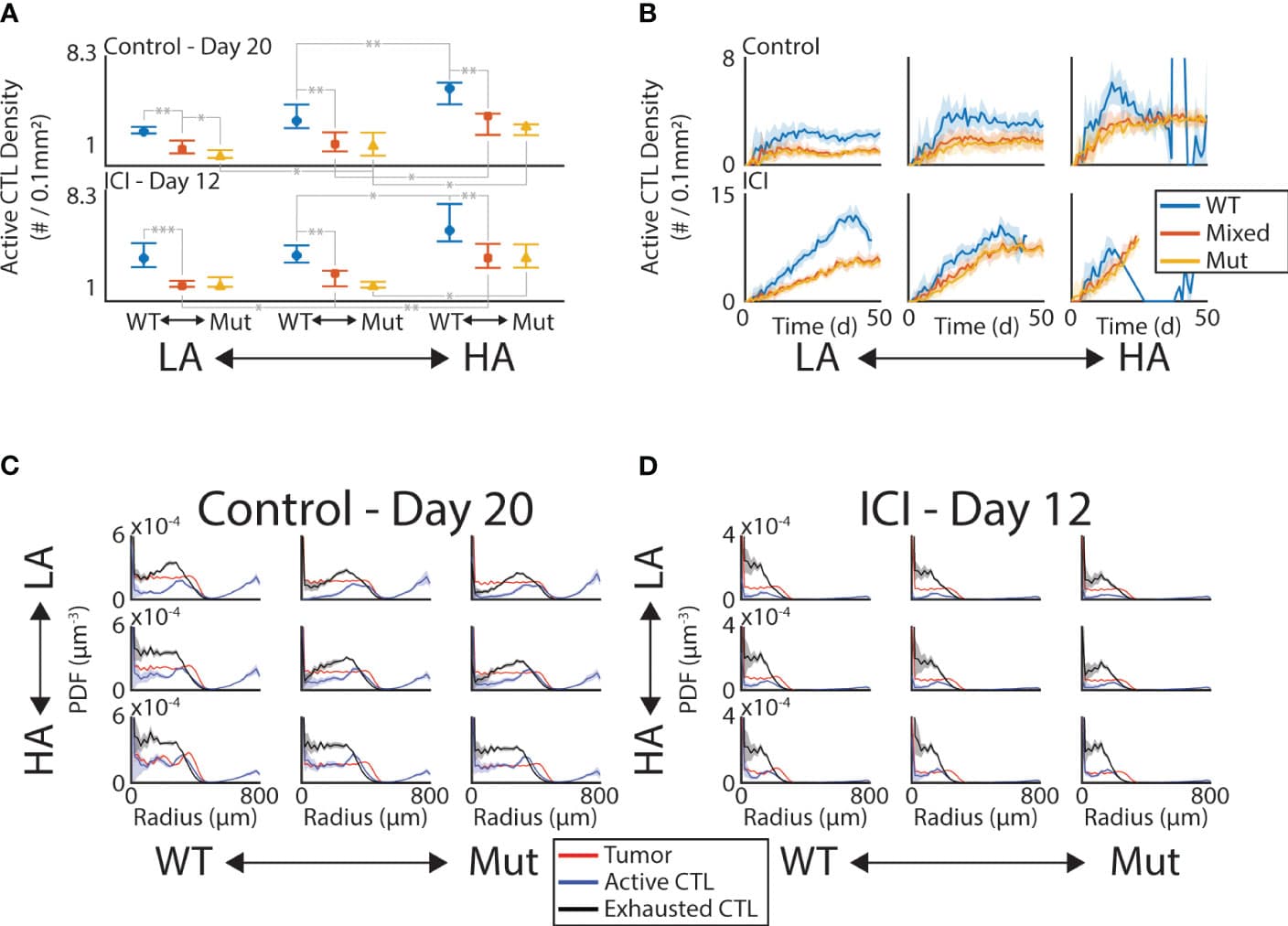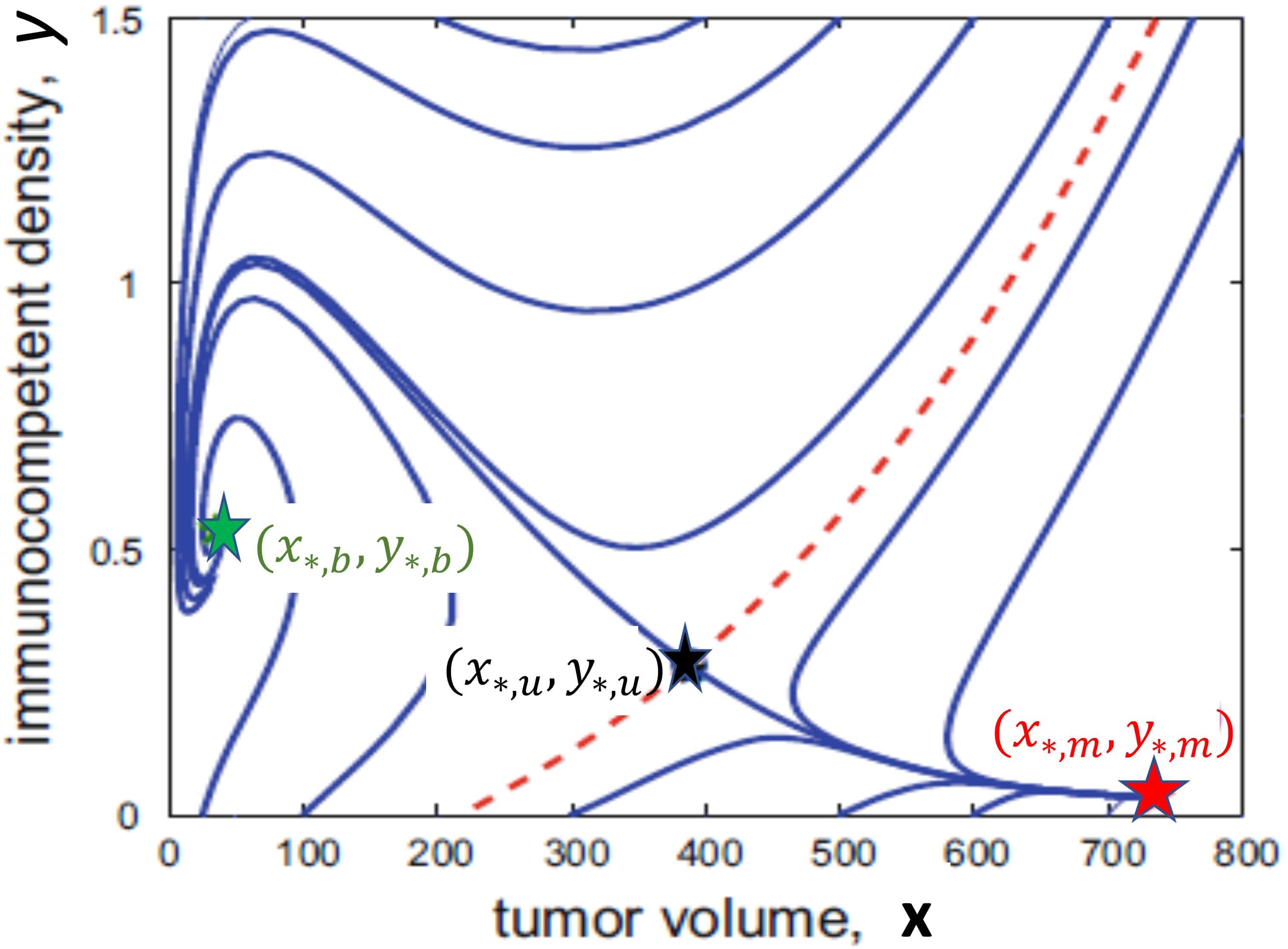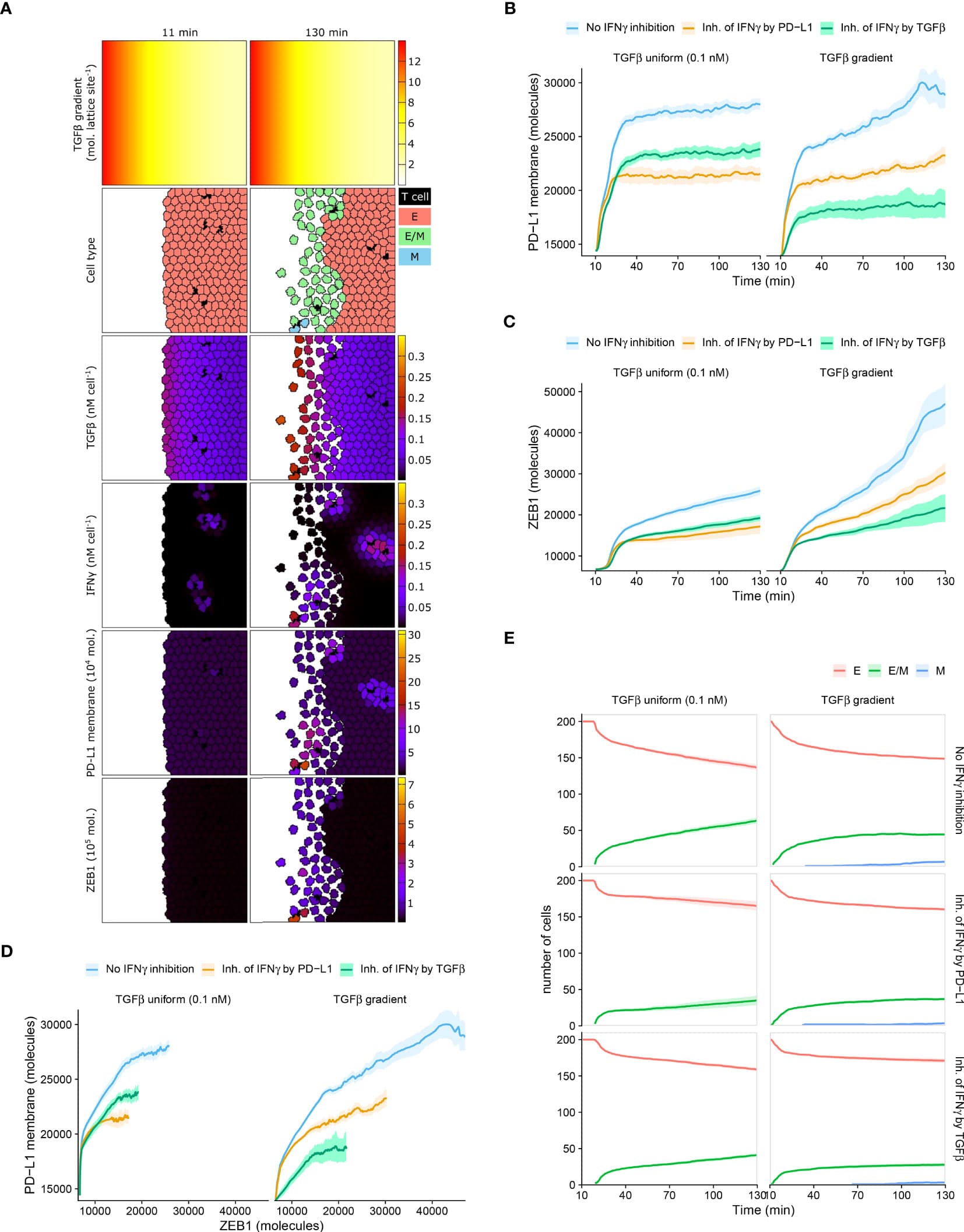Introduction: Cancer combination treatments involving immunotherapies with targeted radiation therapy are at the forefront of treating cancers. However, dosing and scheduling of these therapies pose a challenge. Mathematical models provide a unique way of optimizing these therapies.
Methods: Using a preclinical model of multiple myeloma as an example, we demonstrate the capability of a mathematical model to combine these therapies to achieve maximum response, defined as delay in tumor growth. Data from mice studies with targeted radionuclide therapy (TRT) and chimeric antigen receptor (CAR)-T cell monotherapies and combinations with different intervals between them was used to calibrate mathematical model parameters. The dependence of progression-free survival (PFS), overall survival (OS), and the time to minimum tumor burden on dosing and scheduling was evaluated. Different dosing and scheduling schemes were evaluated to maximize the PFS and optimize timings of TRT and CAR-T cell therapies.
Results: Therapy intervals that were too close or too far apart are shown to be detrimental to the therapeutic efficacy, as TRT too close to CAR-T cell therapy results in radiation related CAR-T cell killing while the therapies being too far apart result in tumor regrowth, negatively impacting tumor control and survival. We show that splitting a dose of TRT or CAR-T cells when administered in combination is advantageous only if the first therapy delivered can produce a significant benefit as a monotherapy.
Discussion: Mathematical models are crucial tools for optimizing the delivery of cancer combination therapy regimens with application along the lines of achieving cure, maximizing survival or minimizing toxicity.
Mechanistic learning refers to the synergistic combination of mechanistic mathematical modeling and data-driven machine or deep learning. This emerging field finds increasing applications in (mathematical) oncology. This review aims to capture the current state of the field and provides a perspective on how mechanistic learning may progress in the oncology domain. We highlight the synergistic potential of mechanistic learning and point out similarities and differences between purely data-driven and mechanistic approaches concerning model complexity, data requirements, outputs generated, and interpretability of the algorithms and their results. Four categories of mechanistic learning (sequential, parallel, extrinsic, intrinsic) of mechanistic learning are presented with specific examples. We discuss a range of techniques including physics-informed neural networks, surrogate model learning, and digital twins. Example applications address complex problems predominantly from the domain of oncology research such as longitudinal tumor response predictions or time-to-event modeling. As the field of mechanistic learning advances, we aim for this review and proposed categorization framework to foster additional collaboration between the data- and knowledge-driven modeling fields. Further collaboration will help address difficult issues in oncology such as limited data availability, requirements of model transparency, and complex input data which are embraced in a mechanistic learning framework












